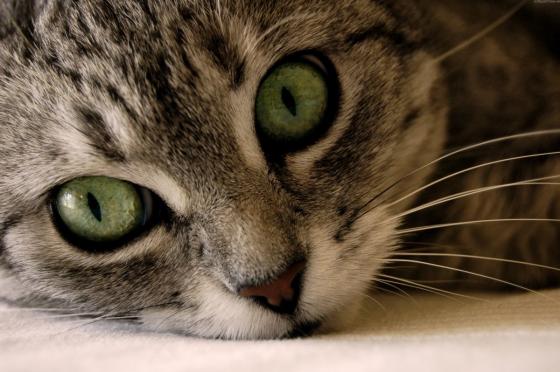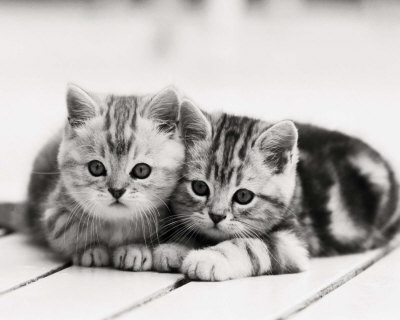Feline Leukemia and Feline Immunodeficiency Virus
Feline Leukemia Virus (FeLV) is a highly contagious retrovirus that suppresses the immune system, leaving the cat vulnerable to other illnesses and infections. Secondary infections are responsible for many of the diseases and symptoms associated with FeLV. This virus is shed in very high quantities in saliva and nasal secretions, and can be found in urine, feces and milk from infected cats. The transmission of FeLV can occur through bite wounds from infected cats, transfer of infected blood, mouth or nose contact with infected saliva or urine, mutual grooming, nose to nose contact with an infected cat, to kittens during pregnancy of an infected cat,or nursing kittens from an infected cat. In the early stages of infection, it is common for the cat to exhibit no signs of disease at all. Over time – weeks, months, or even years – the cat’s health may progressively deteriorate or be characterized by recurrent illness, interspersed with periods of relative health. Common symptoms could include loss of appetite, slow but progressive weight loss followed by severe muscle wasting, poor coat condition, enlarged lymph nodes, persistent fever, pale gums and other mucous membranes, inflammation of the gums and mouth, infections of the skin, urinary bladder and upper respiratory tract, persistent diarrhea, seizures, behavior changes and other neurological disorders, or a variety of eye conditions. The only sure way to protect your cat from Feline Leukemia is to prevent exposure to FeLV-infected cats. Keep your cat indoors, vaccinate uninfected cats against FeLV, and adopt only infection-free cats into households with uninfected cats.

Feline Immunodeficiency Virus (FIV) is a highly contagious lentivirus within the same retrovirus family as Feline Leukemia Virus. It is closely related to HIV and much of the information about HIV holds true for FIV. The primary mode of transmission is through deep penetrating bite wounds. It is also possible to be transmitted from an infected mother cat to kitten during gestation, passage through the birth canal or nursing. In the early stages of infection, the virus is carried to near by lymph nodes, where it reproduces. It then spreads to other lymph nodes throughout the body. This stage of infection may pass unnoticed unless the lymph nodes are greatly enlarged. An infected cat’s health may deteriorate progressively of be characterized by recurrent illness interspersed with periods of relative health. Common symptoms could include poor coat condition and persistent fever with a loss of appetite, inflammation of the gums and mouth, chronic or recurrent infections of the skin, urinary bladder and upper respiratory tract, persistent diarrhea, a variety of eye conditions, slow but progressive weight loss followed by severe muscle wasting, various kinds of cancer and blood diseases, and seizures, behavior changes and other neurological disorders. The only sure way to protect your cat from FIV is to prevent them from exposure to potentially FIV infected cats. As cat bites are the main form of transmission, keeping your cat indoors will reduce the possibility of fighting with other cats, therefore reducing the risk of infection.

Your cat should be tested for FeLV or FIV if your cat has had a bite wound, been outside unsupervised for even a brief period of time, been exposed to any other cat whose status is unknown, recently been adopted or has never been tested. Cats can be tested for both FeLV and FIV with one blood test preformed in hospital. To have this test preformed on your cat call to book an appointment.
Early detection of Feline Leukemia Virus and Feline Immunodeficiency Virus will enable you to manage the disease, maintain the health of your cat, and will also prevent the spread of infection to other cats.
